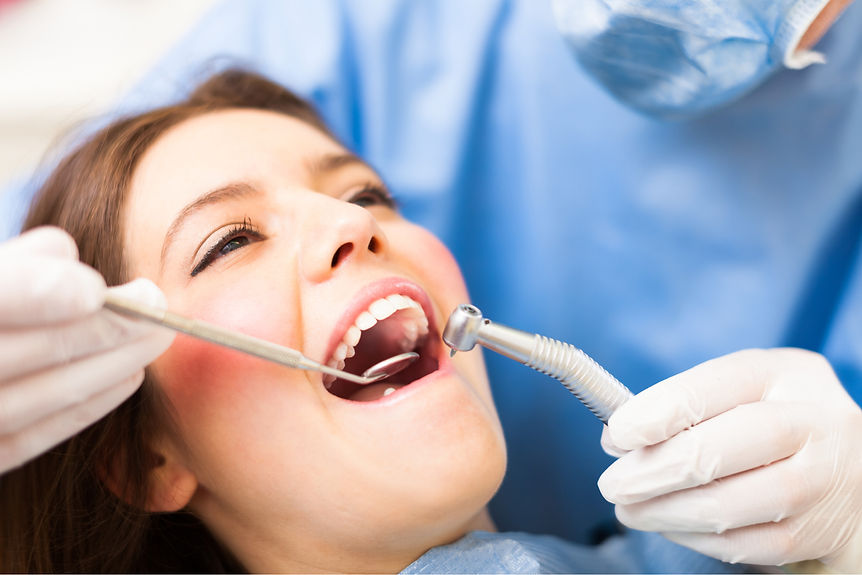
Hygiene/Cleanings
General Dentistry
Dental Checkups
Dental checkups are essential to good oral hygiene and are the best way to prevent problems or detect them at an early stage. Early detection and treatment saves unnecessary pain, time and a great deal of money.
The Academy of General Dentistry recommends checkups twice a year for patients with healthy gums. Oral hygiene needs change with age and the condition of your teeth and gums. Some patients require a checkup schedule that is more or less frequent than twice a year.
What you can expect at a routine checkup. Your dental checkup includes:
● A visual exam of your mouth, face, jaw and neck
● Digital x rays, as prescribed by your dentist
● A gingival pocket exam
● Professional cleaning of your teeth
● Comprehensive data storage of your exam findings.
Visual Examination
Your dentist will be looking for cracked and decayed teeth, as well as for growths and sores on the roof and floor of your mouth, tongue, lips, gums, and the mucous membranes that line your cheeks and gums.
Digital Diagnostics
● Digital X-rays: Digital X-rays detect dental problems that cannot be found during a visual exam. Your dentist determines how often you need to have Digital X-rays.
● Gingival Pocket Exam: A gingival pocket exam determines the presence or risk of gum disease.
Gingival Pocket Exam
Healthy teeth require healthy gums for a strong foundation. A gingival pocket exam determines the presence or risk of gum (periodontal) disease.
What to Know:
● Each tooth sits inside a gingival pocket of gum tissue. Food debris and plaque naturally collect inside this pocket.
● Daily brushing and flossing remove this food debris and plaque from the gingival pocket. If not cleaned, harmful bacteria and hardened plaque penetrate the gumline and deepen the pocket. This contributes to bone loss around the teeth and over time can cause teeth to become mobile.
● During your exam, a hand-held instrument is gently placed between gums and teeth to measure the depth of each pocket.
● In its beginning, gum disease may be reversible. Since it infrequently has symptoms of pain, it is possible to have gum disease and not realize it.
Professional Cleaning
Your teeth are cleaned using special instruments to remove plaque from above and below the gumline. Afterwards, your teeth are polished with a gentle pumice. Polishing smoothes tooth surfaces so plaque is less able to accumulate.
Good Oral Hygiene
The key to healthy teeth and gums is keeping plaque and food from building up in your mouth. Plaque and food attract harmful bacteria that cause bad breath, cavities, and gum disease.
Your tongue also attracts bacteria. While eating, tiny fragments of food collect on the tongue. As these fragments decompose, bacteria create a coating on the top of your tongue.
To keep your teeth and gums healthy:
● Brush your teeth and use a mouthwash twice a day (morning and night)
● Use dental floss every day
● Clean your tongue regularly by using a toothbrush or a tongue scraper
● See your dentist for regular dental checkups
Benefits of Good Hygiene
When you practice good oral hygiene, you will:
● Have less plaque to remove during routine dental checkups, so professional cleanings will be faster and more comfortable
● Lessen your need for dental procedures due to tooth decay or gum disease.
● Have fresher breath
● Feel healthier
● Be more confident about your smile

